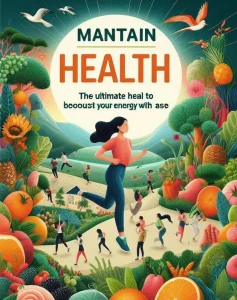The pure plant-centered sweeteners stevia and monk fruit (Luo Han Guo) are pitted head-to-head versus aspartame and Splenda.
A amount of artificial sweeteners have been accepted in North The us by the U.S. Food items and Drug Administration, together with aspartame and sucralose (sold as Splenda), but there are also normal “high-intensity sweeteners” located in vegetation. The world wide industry for non-nutritive, or non-caloric, sweeteners, in common, is in the billions. This consists of all the artificial types and two all-natural types extracted from plants—stevia and monk fruit. You might recall I’ve reviewed stevia just before, but what about monk fruit? That is the subject of my movie Is Monk Fruit Sweetener Protected?.
“The fruits of Luo Han Guo [monk fruit in Chinese] have been applied for hundreds of several years in China as a normal sweetener and as a people medicine….The non-caloric sweet taste…results largely from mogrosides, a group of cucurbitane-type triterpene glycosides that are current at about 1% in the flesh of the fruit.”
“The blended mogrosides have been believed to be about 300 instances as sweet as sucrose [table sugar] so that an 80% extract was nearly 250 times sweeter than sugar.” If you go through opinions in Chinese natural drugs journals, you are going to see pronouncements like this: Monk fruit “has been demonstrated to have the following outcomes: antitussive [anti-coughing], anti-asthmatic, anti-oxidation, liver-protection, glucose-reducing [blood sugar-lowering], immuno-regulation, and anti-cancer.” What they really do not convey to you up entrance, having said that, is that they are talking about decreasing ammonia-induced mouse coughs. What is this about a “natural foodstuff sweetener with anti-pancreatic most cancers properties”? Indeed, monk fruit “may be made use of for each day use as an additive in meals and beverages to protect against or handle pancreatic cancer”—in your pet mouse. There was a research executed on the “antiproliferative activity of triterpene glycoside nutrient from monk fruit in colorectal cancer and throat most cancers,” but it was on colorectal and throat cancer cells in a petri dish. As you can see at 1:53 in my movie, scientists did exhibit mogrosides killing off colorectal cancer cells and throat most cancers cells, and our digestive tract could be exposed straight to these compounds if we ate them. What is missing, though? The researchers did not check it in opposition to ordinary cells. I mean, you could pee in a petri dish and eliminate off most cancers cells, but the full place is to find a thing that kills off most cancers although leaving usual cells by yourself, anything the scientists weren’t in a position to present in this review.
Are there any human research on monk fruit? We’re in luck. “Owing to the rapidly rising reputation of all-natural plant-derived compounds, it will be of interest to ascertain no matter if pure NNS [non-nutritive sweeteners] would be a healthier choice to sugar and artificial NNS for consumers.” So, researchers randomized men and women to drink drinks sweetened with either aspartame, monk fruit, stevia, or desk sugar. They then measured blood sugars about 24 hours and uncovered there was no major big difference among any of the four sweeteners. Hold out a 2nd. As you can see at 2:58 in my video, the sugar team was offered 16 spoonsful of sugar, the amount of money of extra sugar in a 20-ounce bottle of Coke. So, the other 3 groups eaten 16 fewer spoonsful of sugar however however experienced the exact same typical blood sugars?
Table sugar triggers a big blood sugar spike, as you can see at 3:20 in my video clip. Drink that bottle of sugar drinking water with its 16 spoonsful of sugar, and your blood sugars bounce 40 factors about the upcoming hour. If you’re provided a beverage sweetened with aspartame, monk fruit, or stevia, though, very little occurs. That’s to be anticipated, correct? Those people are non-caloric sweeteners devoid of any calories, so isn’t it just like consuming h2o? In that scenario, how could your every day blood sugar values normal out the identical as drinking the sugar-sweetened consume? The only way that could transpire is if the non-calorie sweeteners somehow made your blood sugar spikes worse later on in the day.
Without a doubt, when people today consume Splenda combined with sugar water, they get a greater blood sugar spike and a increased insulin spike chugging the sugar with sucralose (Splenda) than without, even even though Splenda on your own results in no spike of its individual, as you can see at 4:04 in my movie. What about aspartame? Does it do the exact point? At the one-hour mark, the researchers fed the analyze members a frequent lunch, and their blood sugars went again up and down as they ordinarily would following a food. In the sugar group, their post-lunch stages did not spike as superior as they did an hour earlier when they drank straight sugar water, though there was just a light up and down. In the aspartame group, nonetheless, even while their blood sugars did not rise at the time they drank the aspartame-sweetened beverage, their blood sugars shot up better, an hour afterwards at lunch, as if they had just drank a bottle of soda.
What about the organic sweeteners? What transpired in the stevia and monk fruit teams? The very same matter happened. There was the exact exaggerated blood sugar spike immediately after a standard food eaten an hour just after consuming the obviously sweetened beverages. And, bear in mind, this in spite of the fact that the a few non-caloric sweetener groups—aspartame, stevia, and monk fruit—took in 16 fewer spoonsful of sugar. So, you can see how it all equals out in phrases of normal blood sugars, at least in portion for the reason that those people in the non-caloric sweetener teams ate a lot more. Just after consuming a Diet regime Coke, you are much more probable to try to eat a lot more at your upcoming food than after ingesting a common Coke. In actuality, you are probably to eat so a lot extra that the electricity “saved” from changing sugar with non-caloric sweeteners is thoroughly compensated for at subsequent foods, so there is no variation located in full each day calorie intake. The sugar-sweetened beverage led to big spikes in both of those blood sugar and insulin, whilst these responses were being greater for the three other drinks adhering to the lunch eaten later on. So, when it comes to calorie ingestion, blood sugars, or insulin spikes, they had been all just as bad.
Is Stevia Very good for You? is the online video I pointed out.
Important TAKEAWAYS
- The world wide current market for non-caloric sweeteners is in the billions and includes synthetic sweeteners like aspartame and sucralose (offered as Splenda), as properly as two pure ones extracted from plants—stevia and monk fruit (Luo Han Guo).
- Monk fruit has been utilized for hundreds of years in China as both of those a normal sweetener and a people medicine. The non-caloric sweet taste has been estimated to be about 300 occasions as sweet as desk sugar, and monk fruit has been explained to be antitussive (anti-coughing), anti-asthmatic, anti-most cancers, and additional, but these have been from animal and petri dish research.
- When researchers randomized human subjects to consume drinks sweetened with aspartame, monk fruit, stevia, or table sugar and then calculated their blood sugars around 24 several hours, no important variance was observed among any of the four sweeteners irrespective of the sugar team obtaining 16 spoonsful of sugar, the total of included sugar in a 20-ounce bottle of Coke.
- Whilst the a few non-caloric sweetener groups—aspartame, stevia, and monk fruit—took in 16 less spoonsful of sugar, it all equaled out in conditions of normal blood sugars. This is owing in component to these in the non-caloric sweetener teams feeding on far more. Indeed, right after ingesting a Eating plan Coke, you are much more possible to consume far more at your future food than immediately after ingesting a standard Coke and are far more most likely to consume so much much more that the energy “saved” from changing sugar with non-caloric sweeteners is thoroughly compensated for at subsequent meals.
- The sugar-sweetened beverage led to significant spikes in each blood sugar and insulin, but the responses ended up greater for the a few non-caloric sweetened beverages pursuing lunch eaten an hour later. So, when it comes to calorie ingestion, blood sugars, or insulin spikes, they were all equally bad.
I also have other videos on artificial sweeteners, which includes aspartame and Splenda:
Of program, sugar is not fantastic for you, possibly. How Much Added Sugar Is Far too Much? and Flashback Friday: If Fructose Is Undesirable, What About Fruit? Look at the video clips to master extra.
Can you overdo fruit? Discover out in Flashback Friday: How Much Fruit Is Too Much?.
In wellbeing,
Michael Greger, M.D.
PS: If you haven’t still, you can subscribe to my cost-free videos in this article and observe my are living displays:






More Stories
Do you LOVE your dermatologist? Importance of Providers You Can Trust
Changing how Black Americans use life insurance could help shrink the racial wealth gap [Video]
Digital Innovation Spurs Seamless Healthcare Engagement